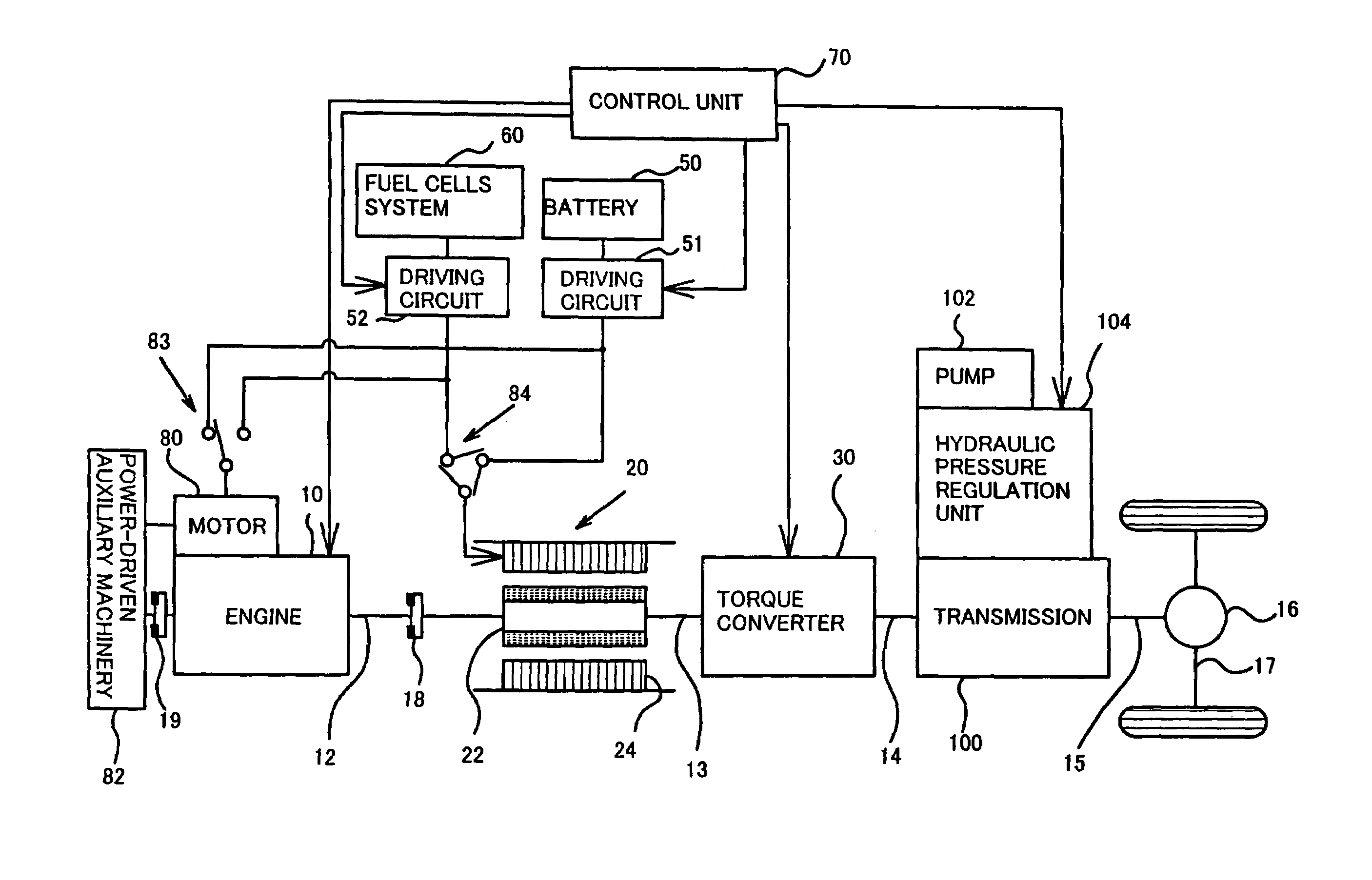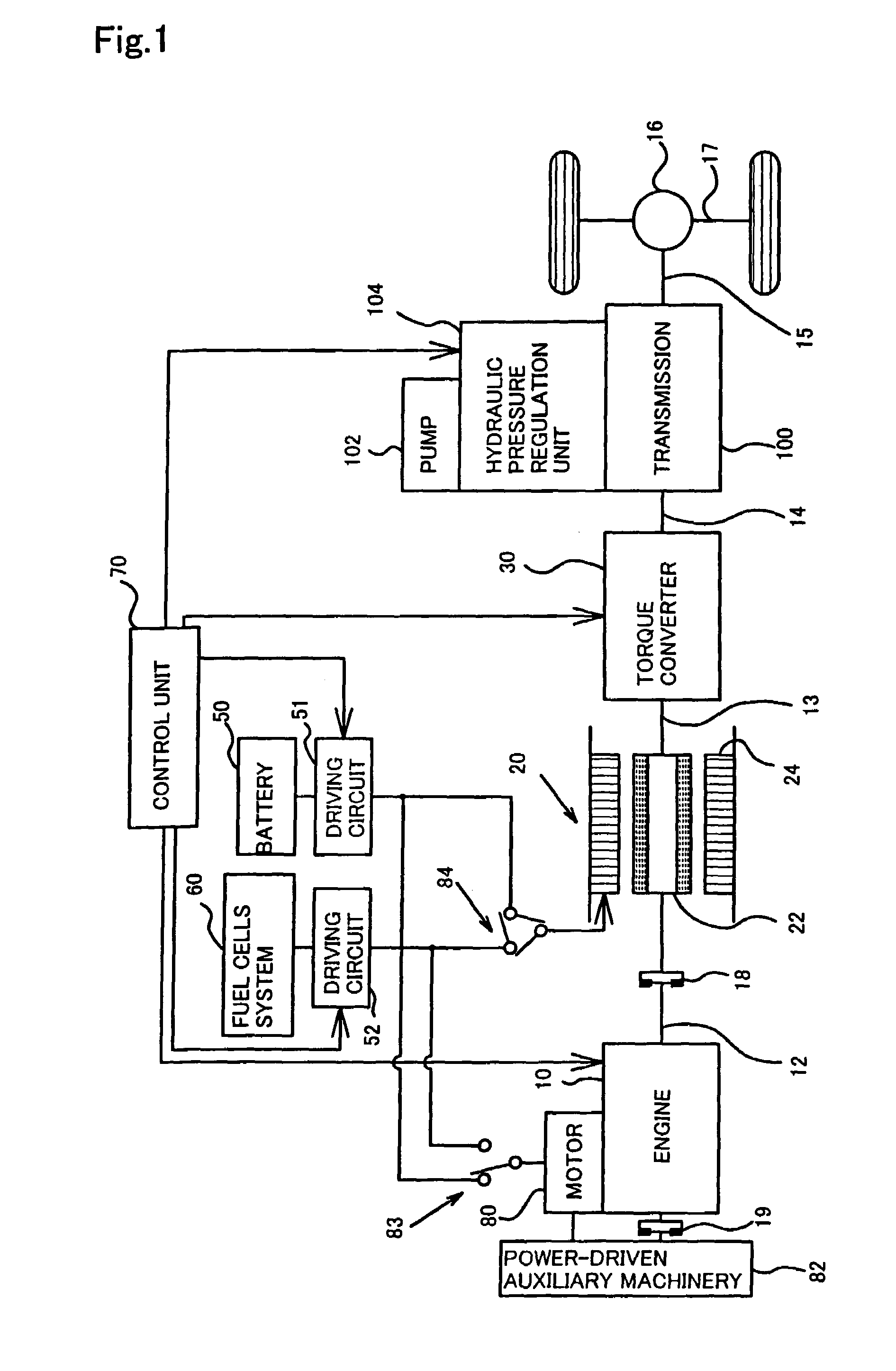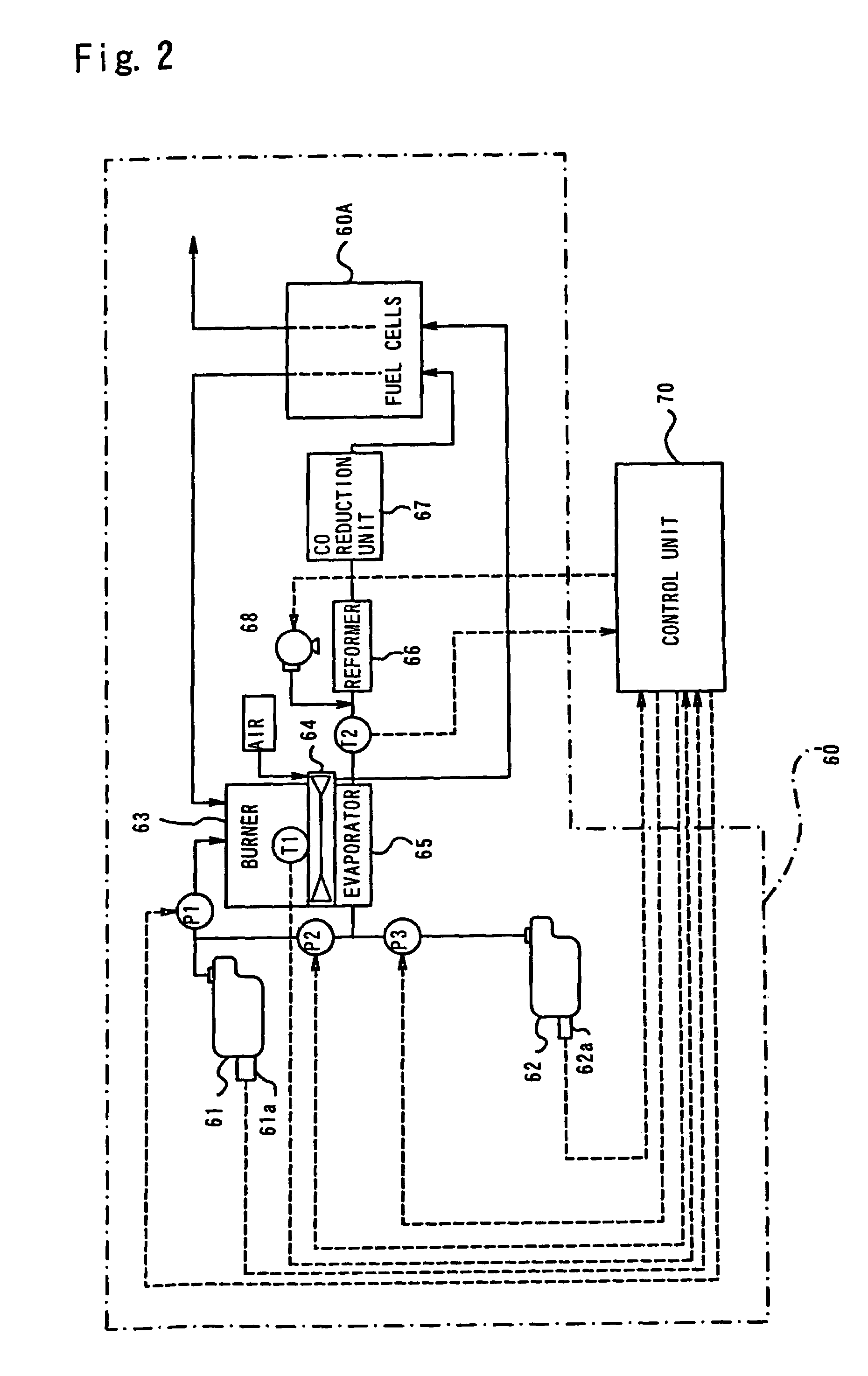Moving object with fuel cells incorporated therein and method of controlling the same
a technology of moving objects and fuel cells, which is applied in the direction of gas pressure propulsion mounting, process and machine control, propulsion parts, etc., can solve the problems of fuel cells, insufficient discussion on the optimum combination, and inability to recover power generation ability, so as to save fuel and improve the driving efficiency of heat engines.
- Summary
- Abstract
- Description
- Claims
- Application Information
AI Technical Summary
Benefits of technology
Problems solved by technology
Method used
Image
Examples
second embodiment
F. Second Embodiment
[0475]The following describes another hybrid vehicle in a second embodiment according to the present invention. The first embodiment and its modified examples regard the hybrid vehicle that is driven with the power output to only one axle. The technique of the first embodiment is, however, not restricted to this structure, but is applicable to a hybrid vehicle that is driven with the power output to two axles, that is, a four wheel-drive hybrid vehicle. The application to the four wheel-drive hybrid vehicle is described below as the second embodiment.
[0476]FIG. 20 schematically illustrates the structure of the hybrid vehicle in the second embodiment. The difference from the first embodiment is that power may be output to two axles 17 and 17A in the hybrid vehicle of the second embodiment. The structure of the second embodiment enables the driver to arbitrarily set the output of power to the axle 17A. A 4WD mode switch for specifying the four-wheel drive is dispos...
third embodiment
G. Third Embodiment
[0491]The following describes still another hybrid vehicle in a third embodiment according to the present invention. FIG. 22 schematically illustrates the structure of the hybrid vehicle in the third embodiment.
[0492]The difference between the third embodiment and the first embodiment is the mechanism of transmitting power of the engine 10 and a motor 20B to the axle 17. In the structure of the third embodiment, the transmission mechanism has a continuously variable transmission 180 (hereinafter referred to as CVT) and a sub-transmission 170, which is disposed before the CVT 180 to change the speed of the power transmitted to the CVT 180.
[0493]The CVT 180 is a known mechanism, in which two pairs of pulleys 181a,181b and 182a,182b are arranged to make rotating shafts parallel to each other, and the power is transmitted between the two pairs of pulleys 181a,181b and 182a,182b via a belt 183. The interval between the paired pulleys 181a and 181b or 182a and 182b is v...
fourth embodiment
H. Fourth Embodiment
[0522]The following describes a fourth embodiment according to the present invention. The hybrid vehicle of the fourth embodiment has the same hardware structure as that of the hybrid vehicle of the first embodiment shown in FIG. 1. The basic operations of the fourth embodiment are also identical with those of the first embodiment. The hybrid vehicle of the fourth embodiment is driven by properly using the engine 10 and the motor 20 according to the maps of FIGS. 8 through 11. The motor 20 is driven with the electric power output from the fuel cell 60. The technique of the first embodiment controls the operation of the motor 20 according to the remaining quantity of the FC fuel. The technique of the fourth embodiment, on the other hand, controls the operation of the engine 10 according to the remaining quantity of the fuel for the engine 10, that is, the remaining quantity of gasoline.
[0523]FIG. 33 is a flowchart showing a drive control routine executed in the fo...
PUM
| Property | Measurement | Unit |
|---|---|---|
| electric power | aaaaa | aaaaa |
| total power | aaaaa | aaaaa |
| speed | aaaaa | aaaaa |
Abstract
Description
Claims
Application Information
 Login to View More
Login to View More - R&D
- Intellectual Property
- Life Sciences
- Materials
- Tech Scout
- Unparalleled Data Quality
- Higher Quality Content
- 60% Fewer Hallucinations
Browse by: Latest US Patents, China's latest patents, Technical Efficacy Thesaurus, Application Domain, Technology Topic, Popular Technical Reports.
© 2025 PatSnap. All rights reserved.Legal|Privacy policy|Modern Slavery Act Transparency Statement|Sitemap|About US| Contact US: help@patsnap.com



